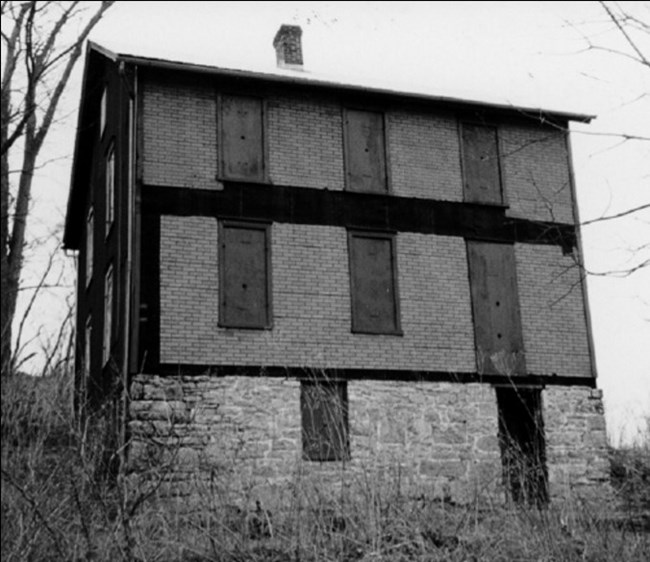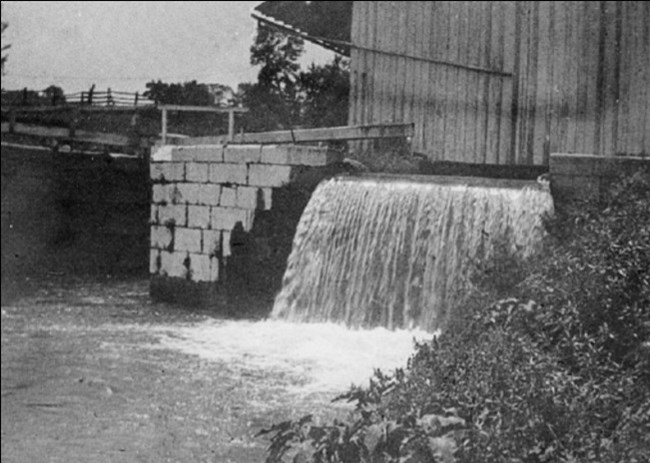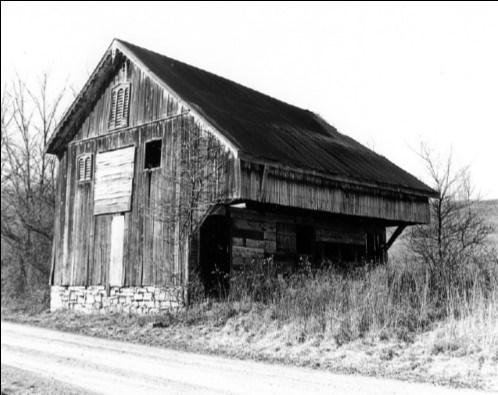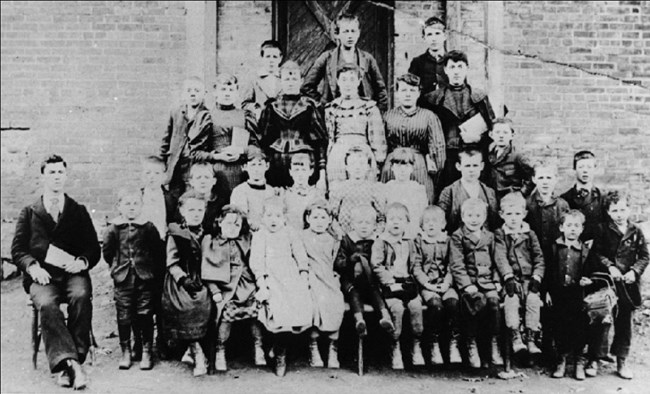
NPS Photo Stop 3 – Flory HouseNeither Hail, Nor Sleet, Nor Snow….Twenty-first century technology gives the capability for instantaneous communication. Waiting a day to hear about the birth of a grandchild or world news is obsolete. During canal operations, the telephone was the fastest way to communicate but most people sent letters. The Four Locks Post Office was a vital link to the outside world for its residents who anxiously waited up to a week for a letter to arrive. It operated here from 1878-1903. Of its eight postmasters, Mrs. Mary Flory was the only woman and served the longest term, eight years from 1885-1903. 
NPS Photo Stop 4 – Lock 49Hay and IceImagine traveling in a canal boat down the canal in the heat of summer in 1910. Hay for the mules is getting low. Sweat drips from your brow and the tepid water does not quench your thirst. Stopping at Lock 49 solves these problems. Built in 1863 and leased from the Canal Company for $36 a year, the building once located over the flume at lock 49 operated as an icehouse, storehouse, and warehouse. Local farmers hauled grain and hay which was stored here and later sold to the canallers. Ice was sold to canallers and local residents. Cross the bridge over the lock and proceed up the road to the left. 
NPS Photo Stop 5 – Lock 50In PerilWalking along the canal today, one envisions a peaceful era with little danger. The oft empty prism and bypass flumes belie the danger that awaited even the most cautious of canallers. 
NPS Photo Stop 6 - Watch HouseLast One StandingBeing on call 24 hours a day seven days a week, it was easier for lock keepers to see oncoming boats from a watch house than from the lockhouse. Used by lock keepers while waiting for canal boats, this watch house located at Lock 50 is the only one left standing on the canal. 
NPS Photo Stop 7– Mule BarnCanal Boat EnginesMules were the engines of the canal boats. Captains typically kept two pairs of mules: one would tow the boat and the other would rest in the mule barn on the boat. Each pair typically worked a six hour shift called a "trick" covering about 16 miles. A diet of corn, hay, and oats kept the mules strong so they could pull the 120 tons of coal carried by the boat. During the winter when the canal was closed, mules were housed in barns. This barn was reconstructed by the National Park Service and stands as a reminder of the hard working mules that towed canal boats between Georgetown and Cumberland. Turn around and follow the road to Lock House 49 
NPS Photo Stop 8– Lock House 49Lock KeepersLock keepers were responsible for lock operations and maintenance and usually operated only one lock. The lock keeper at Four Locks was responsible for four locks. To do so, the lock keeper enlisted help from other residents in order to keep canal traffic moving. The Taylor family housed four generations at Lock House 49. Today, you can stay overnight in the lock house as part of the Canal Quarters program and experience what it might have been like for the residents. Continue approximately 300 yards down the road up to the school house 
NPS Photo Stop 9 – School HouseReading, and Writing, and ‘RithmaticFor many, the one room school house symbolizes a simpler time. Operating from 1877 until 1943, this building stands as a reminder of those days. Imagine teaching up to thirty childen in eight grades for $240 a year. Things we take for granted today - central heat, electricity, indoor plumbing - were not found here. Instead, oil lamps provided light, the pot-bellied stove provided heat, and one had to venture outside into the heat or cold to visit the outhouse. Besides learning, students had additional responsibilities such as being required to stack firewood for the stove and carry drinking water from the Hasketts well located near the canal. On occasion, Charles Merlott and other boys would purposely spill much of the water from a bucket while walking back to school only to be sent from class to get more water. As you look through the windows listen for the scratch of chalk on slates as students recite history under the watchful eye of the teacher. 
NPS Photo ConclusionFour Locks lost its economic importance in 1924 with the closing of the canal. However, it became a major center for recreation along the Potomac River and the slackwater above Dam 5. Popular for boating and fishing, Four Locks boasted numerous summer residences from 1924 until the mid-1950’s. Today, the remaining buildings stand as a legacy to the community and families that once lived here. |
Last updated: June 29, 2020
